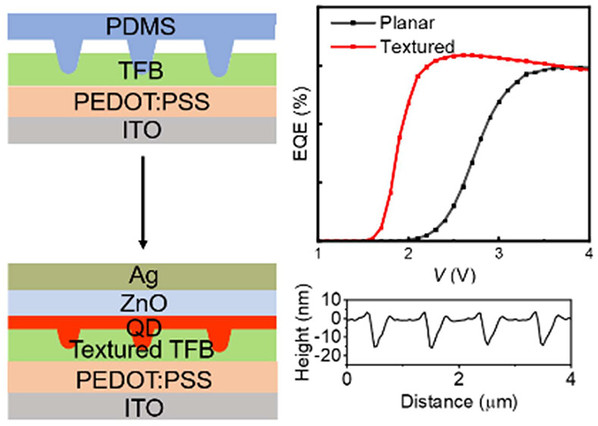Improved Charge Injection Balance in Quantum Dot Light-Emitting Diodes through Interface Texture
Xuhao Sun1, Xingtong Chen1*, Xiaojuan Sun1, Jiachen Xie1, Luohe Zhou1, Song Chen1,2(陈崧)*
1Suzhou Key Laboratory of Novel Semiconductor-optoelectronics Materials and Devices, Collegeof Chemistry, Chemical Engineering and Materials Science, Soochow University, Suzhou 215123 Jiangsu,China
2Jiangsu Key Laboratory of Advanced Negative Carbon Technologies, Soochow University, Suzhou 215123 Jiangsu,China
J. Phys. Chem. Lett. 2024, 15, 7199−7205
Abstract: The existing methods to improve the charge balance of quantum dot light-emitting diodes (QLEDs) rely on energy-level matching, but these approaches have been limited by material availability and Fermi-level pinning. Here, we propose a solution that does not require changes to the materials’ electronic properties. By using nanoimprinting technology to texture the interface between the hole-transporting layer (HTL) and colloidal quantum dot (CQD) layer, we can increase the HTL-CQD contact area. This significantly enhances the hole injection rate while keeping the electron injection rate essentially unchanged. Compared with the conventional planar structure, QLEDs with textured HTL exhibit lower luminance threshold voltage, significantly higher external quantum efficiency at low bias voltages, improved operational stability, and a similar Lambertian factor. Comprehensive measurements confirm that the HTL-CQD interface texture allows more efficient hole injection into CQDs to occur under lower bias, resulting in less CQD charging and more efficient exciton recombination.

链接://pubs.acs.org/doi/10.1021/acs.jpclett.4c01486